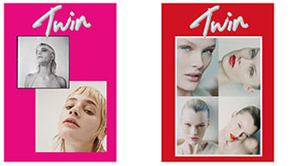Her vivid, evocative ‘in-camera collages’ of the Californian landscape will have you captive for hours. Twin meets photographer Terri Loewenthal to talk about immersing oneself in the environment, the power of nature and startling “little old ladies in women’s restrooms.”
How did the idea of California manifest itself in your consciousness when you were growing up?
Everything I knew about California I learned from Top Gun and Beverly Hills 90210. I spent my childhood in South Florida, on the other side of the continent. As a kid, I didn’t think California was that much different than where I grew up. We had beaches, sun, pastels and fancy cars too. I played a lot of volleyball. Same thing, different coast, right? I was a jock, competing at a national level. What seemed to matter most at the time was that the volleyball players coming out of California were better than the ones coming from anywhere else. And of course, the continual juvenile version of an east vs. west debate: which is better, Disney World or Disneyland?
I ended up in California not because of a childhood vision, but because of a rebirth later in life. Right after I graduated from college in Texas, my rental house burned down. I took the nominal insurance settlement, borrowed my mom’s manual 35mm camera, and hit the road. I traveled for over a year exploring, camping alone, aligning my schedule with the sun’s, and teaching myself to take pictures. That was when I fell in love with photography and California’s backcountry.

Terri Loewenthal, Psychscape 48 (Lookout Mountain, CA) 2017.
What about the landscape makes it compelling to photograph?
I chose to work with the eastern Sierra for this body of work. It’s not the California most people have in mind – it’s nothing like El Capitan in Yosemite, the ring of mountain peaks around Lake Tahoe, or the beaches in San Diego riddled with surfers. There’s something otherworldly about it. You see Mono Lake from above as you drive towards it, and it doesn’t even make sense. There are no rivers or streams flowing from it; being in the desert, it just evaporates. It’s away from everything, the end of the line.
When I’m thinking about where to shoot, it’s very much about using the shapes of the land as a paint brush — for example, how the curve of a dune when juxtaposed with another dune overlapping it creates a sloping line, a single gesture formed by the contours of the land. The eastern Sierra expanse is ripe with geometry, all these granite building blocks, which I use in my work. With a lack of iconic shapes like pines and sequoias, I’m able to freely use the landscape as raw material instead of subject.
Also, photographing remote landscapes means camping. I have a deep need to sleep on the land, to skip some showers. I love to lose the safety of manicured city life.
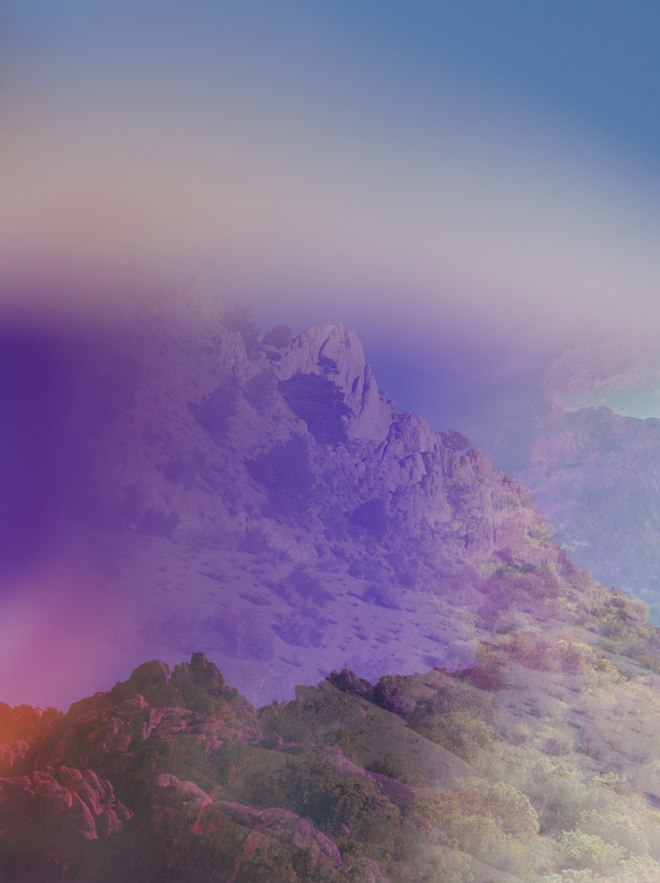
Terri Loewenthal, Psychscape 73 (Downs, Mount, CA) 2017
How much did you choose to engage with the predominantly male canon of Californian photography when conceiving this project?
When I had the idea for these images, it was purely aesthetically driven, at least in my conscious mind. I’m extending an invitation to step inside of these imaginary places, to have a subjective experience. Our perception of the natural world isn’t gendered. I don’t think of the conceptual framework of Psychscapes as relating to gender, however there are a number of gender norms I don’t buy into, and that offers a certain freedom necessary for creating this work. I love camping. I love being dirty. I love uncontrolled adventure. I might be less afraid to venture solo into un-manicured territory because I’m taller than most men – I can’t tell you how many times I’ve startled little old ladies in women’s restrooms!

Terri Loewenthal, Psychscape 18 (Banner Ridge, CA) 2017
Do you feel a tension between the wild as a free space and the idea of capturing it through photography?
I’m currently reading a book called The Ohlone Way about the indigenous people of the Bay Area. It’s a fantastic account of the abundant wilderness and wildlife here before white people “headed west.” The sky was so filled with birds that, looking up, you were more likely to see one than not. I often wonder if my life were as deeply enmeshed with the natural world, if I’d be drawn to make landscape images. My desire is to commune with my subject. Looking through the lens, I slow down and consider subtle nuances. Sometimes it’s shape, or correlation of shapes, sometimes it’s color, sometimes it’s a character trait that I didn’t notice before the camera was in my hand. Mine is a sensitive approach to photography. It’s always been an attempt to process my surroundings more deeply. What I mean to do is appreciate. If I were living off the land, I wouldn’t need to venture away from the distractions of city life in order to touch the dirt. I wouldn’t seek out the grounding feeling that immersion in nature offers. But here I am, surrounded by pavement and electronics, and I do need to visit those spaces for refuge. I am driven to make something out of the feeling of re-finding myself when I’m there.
Was there anything about the landscape that surprised you when you were working in it?
In America, when you drive through the mountains, there are often signs urging you to pull over in the most picturesque places, signs that say “Overlook” or “Scenic View.” To my surprise, these vistas don’t work. Everything is at infinite focal distance, and it feels flat. I am able to create more when I’m nestled in a dynamic environment. If I’m on a trail, say, along the side of a canyon, I’m able to utilize the huge mountain face that is reachable with one hand, and the majestic mountain ranges in the distance. Another surprise is that the horizon line, something I’ve loved photographing all of my life, proves to be a challenge with these compositions. What isn’t surprising in the least is that I’m happy to be limited to the 360 degrees surrounding me as I’m making the collage. Limitations are built into my process, and that’s a relief.
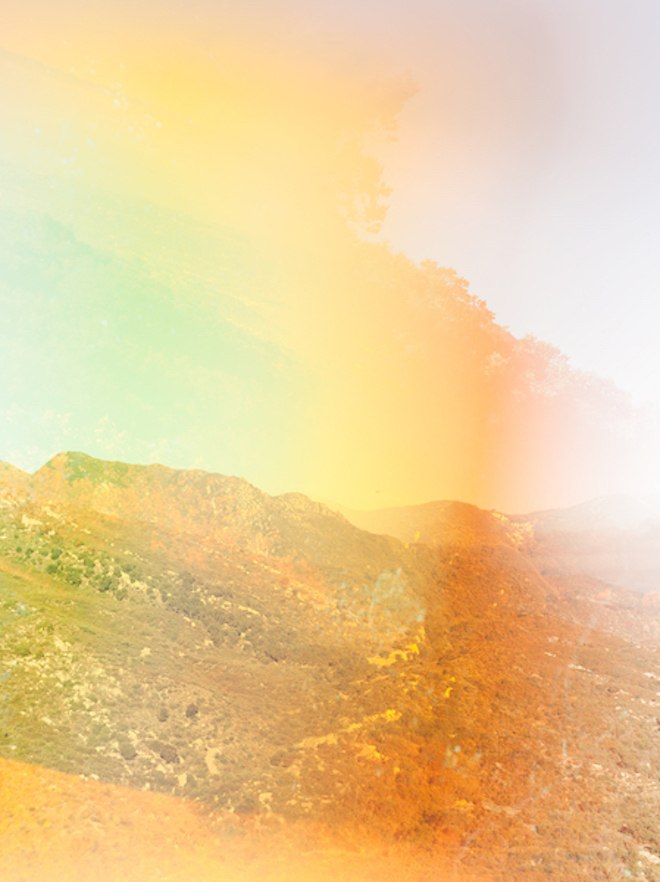
Terri Loewenthal Psychscape 26 (Rock Garden, CA) 2017
Can you talk about your compositional approach and process?
Each image is a single exposure. All of the layering and colour shifting happens in-camera. I like to think of these images as in-camera collages. There are a number of aspects I tweak as I’m compositing: the position, saturation and palette of each layer, along with all the traditional photographic controls like focus and shutter speed. I can make an environment feel soft or hard, depending on how muted or bright it is. Placing different colour washes next to each other, then saturating them just so, is often the final piece that makes an image sing – like sprinkling flake salt on top of your meal. I just experiment until I strike something that sparks the rush. Anyone who’s ever made anything knows about the rush. It doesn’t always happen, but when it does, I no longer question what I’m doing, or why I’m doing it – it’s just absolutely meant to be.
Did you feel that your relationship with the landscape changed as you were creating the images?
Absolutely. Since I’m working to distort reality, and it’s all happening in real-time. I don’t feel like I’m looking at the mountains as-they-are anyway. They immediately morph into something new and I feel like I’m working with them, alongside them, in tandem. Not only have Psychscapes changed my relationship to the landscape I’m actively working with, they’ve changed my relationship to every wild place I’ve yet to see. I can barely take a hike now without trying to envision it in the context of a Psychscape, even if I don’t have a camera in my hand.
Shooting these images involves contortions, octopus arms, propping things up with my knees. I dive deep into the unknown. It’s a reverie where I feel like I’m falling through times and places. I experiment until I stop questioning my experiments, until I find a composition that feels like another landscape altogether – a place I want to be. When I resurface, I find myself twisted into the least comfortable position attainable, a crick in my neck and knotted-up shoulders. My yoga teacher would be horrified. There’s always a “come to” moment where I finally open both eyes and think briefly, “whoa, where am I?”
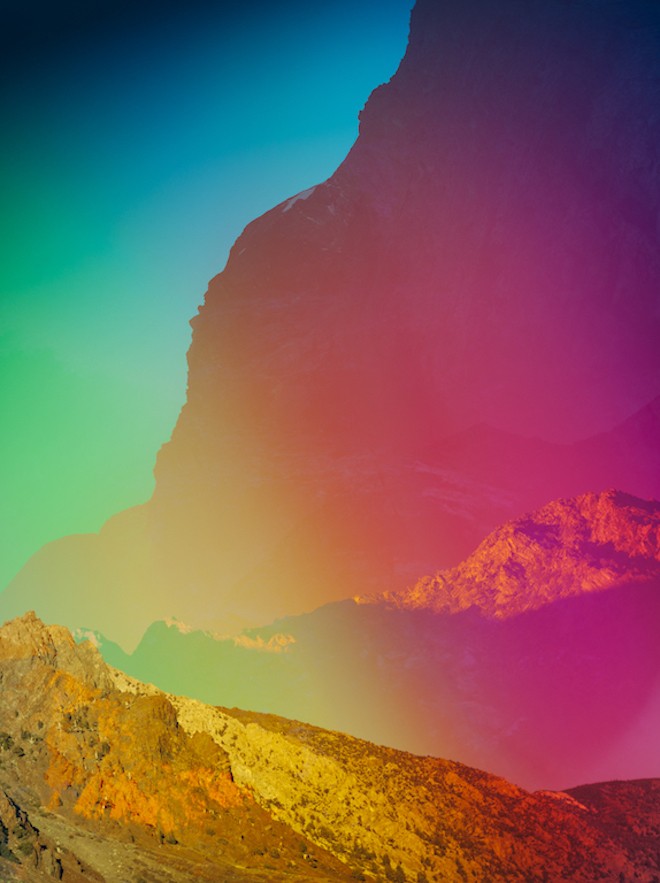
Terri Loewenthal Psychscape 41 (Lundy Canyon, CA) 2017
Aside from the natural surroundings, did you seek inspiration anywhere else when preparing for the project?
Color plays a huge role in my drive to create these images, and paintings are where I find the most unexpected palettes. I’m surrounded by fantastic painters in my immediate community. My dear friends Joe Ferriso and Alexander Kori Girard come to mind. They both have a knack for using odd colors that when used solo, might not work; but they add other colors, and then there’s a relationship between the colors that challenges what I thought of the colors in the first place. I have an incredible painting of Joe’s in my living room where he started with rejected house paint from the hardware store, and built from there. It’s my reminder that nothing exists in a vacuum, that the correlation between two things makes a third thing. I was a touring musician for the first ten or so years of my photographic career and I draw a lot from that experience too. Attention to rhythm, composing layers of color/sound washes, and seeking collaboration with my surroundings are all instincts honed by performing pop music. Inspiration, as it goes, tends to be an ongoing concoction of every single moment of your life.
Are there other landscapes that you’re interested in approaching in the same way?
I had the idea for these images years ago, but I’ve only recently figured out how to pull them off. California is a natural starting place. Not only is this the place where I fell in love with photography, it’s the place where I’ve found my people – people who care more about creativity, social justice, and community building than paying homage to the crumbling paradigms of what we “should” do with our lives. In California, I feel encouraged to explore ideas that don’t spring from what I’ve been taught or shown, to trust my inner rebel. Hopefully my discovery will open the door to all sorts of adventures. At the moment, I’m curious about working in a tropical place, mainly because an expanse is harder to come by. Jungles are tangled, the shapes less obvious due to the uniformity of color and the dense layers of plants growing on top of one another. I wonder if Psychscapes would work in that context. I wonder if I’d be able to make images that would offer a similar sense of otherworldliness. Maybe jungle Psychscapes would feel like you’re nested inside the pot of gold at the end of the rainbow. And maybe that’s not so bad.
TERRI LOEWENTHAL: Psychscapes is on at CULT in San Francisco until April 21st.

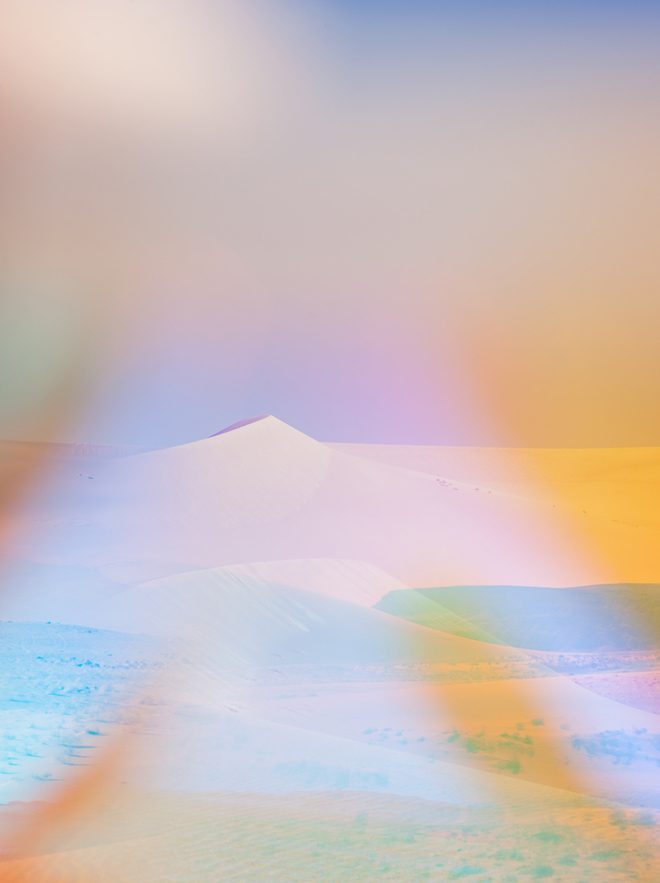
 PREVIOUS
PREVIOUS
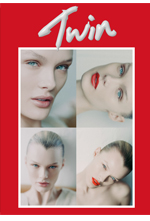
 Twitter
Twitter
 Tumblr
Tumblr
 YouTube
YouTube
 Facebook
Facebook
 Instagram
Instagram
